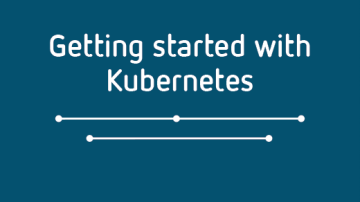Kubernetes, the de facto standard for container orchestration, has quickly grown to dominate the container environment both in terms of infrastructure management and application development. As an open source platform with a huge community of enthusiasts and professionals, and being a part of the Cloud Native Computing Foundation, Kubernetes has become not only a powerful and impressive orchestration system itself but it has fostered a huge ecosystem of related tools and services to make it easier to use and extend its functionality with ever more powerful and sophisticated components.
In this new eBook, A guide to Kubernetes for SREs and sysadmins, Jess Cherry (with contribution by Ben Finkel) covers a slew of these related tools and services, for management of and integration with Kubernetes. Cherry and Finkel provide some helpful getting started guides, both for Kubernetes and some of the tools. They even share interview questions to help prepare readers for jobs within this quick-growing, massive ecosystem.
Getting to know Kubernetes
If you're just getting started with Kubernetes and containers, Ben Finkel's Getting started with Kubernetes is both appropriately titled and an excellent introduction to the relevant concepts you need to understand in order to jump in. It's also a lightweight quickstart guide for setting up and using a single-node cluster for testing. There's no better way to learn than to get your hands on the technology and dive right in. What's a Pod? How do you deploy an application on the cluster? Ben's got you covered.
The primary way to interact with a cluster is the kubectl command—a CLI utility that provides a human-accessible way to interact with the API servers that manage the cluster itself. For example, you can use kubectl get to list the aforementioned Pods and Deployments, but as you'd expect with something as complex as Kubernetes, its CLI interface has a ton of power and flexibility. Jess Cherry's 9 kubectl commands sysadmins need to know cheat sheet is a great introduction and a good way to get started using kubectl.
Similarly, Cherry's Kubernetes namespaces for beginners does a good job of explaining what namespaces are and how they're used within Kubernetes.
Simplify working with Kubernetes
Working with a complex system can be difficult, especially with a powerful but minimal CLI tool like kubectl. Luckily within the ecosystem surrounding Kubernetes, there are a number of tools available to simplify things and make scaling services and cluster management easier.
The kubectl command can be used to deploy and maintain applications and services on Kubernetes, primarily with YAML and JSON. Once you begin to manage more than just a few applications; however, doing so with large repositories of YAML can become both repetitive and tedious. A good solution can be to embrace a templated system to handle your deployments. Helm is one such tool, dubbed a package manager for Kubernetes, Helm provides a convenient way to package and share applications. Cherry has written a number of helpful articles about Helm: guides for creating effective Helm charts and helpful Helm commands.
Kubectl also provides you with a lot of information about the cluster itself, what’s running on it, and events that are occurring. These can be seen and interacted with using kubectl but sometimes it helps to have a more visual GUI to interact with. K9s fits between both worlds. While still a terminal application, it provides visual feedback and a way to interact with the cluster without long kubectl commands. Cherry has also written a good guide to getting started with k9s.
Extensions build on Kubernetes power and flexibility
Luckily, despite being complex and powerful, Kubernetes is amazingly flexible and open source. It focuses on its core strength—container orchestration—and has allowed the community of enthusiasts and professionals that surround it to extend its abilities to take on different types of workloads. One such example is Knative, providing components on top of Kubernetes to provide tools for serverless and event-driven services, and taking advantage of Kubernetes’ orchestration prowess to run minimal microservices in containers. This, it turns out, is extremely efficient, providing both the benefits of developing small, easily tested and maintained applications in containers and the cost benefits of running them only as needed, triggered on specific events but otherwise dormant.
In this eBook, Cherry provides a look at both Knative and its eventing system, and why it is worthwhile to investigate using Knative yourself.
There’s a whole world to explore
Get started with Kubernetes and the ecosystem surrounding it with this new eBook by Jess Cherry and Ben Finkel. In addition to the topics above, there are a number of other great articles about helpful Kubernetes extensions and third-party tools.









Comments are closed.